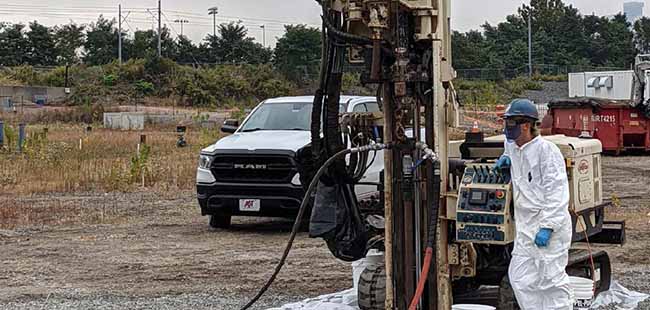Morning Session 10:00 am to 12:00 pm
- Data Gaps – Identification and Resolution: Quantitative High Resolution Site Characterization (QHRSC) and 3D Modeling – Nathan Thacker, Senior Geologist, AST Environmental, Inc.; David Heicher, Founder, GeoImaging Systems, LLC )
- Conventional sampling program limitations and benefits of high-density sampling for in situ remediation
- Implementing a high-density soil and groundwater sampling program in the field
- Qualitative HRSC tools, methods and data interpretation
- Integrating high-density data with other information sources (historical data, qualitative screening tools, geophysical surveys) to refine the CSM
- Development of 3D data visualizations and refinement of legacy conceptual site models.
- In-Situ Remedial Technologies: VOCs and Petroleum Hydrocarbon Remediation Using In Situ Products – Derek Pizarro, CPG, Sr. Product Mgr., AST Environmental, Inc.
- Trap & Treat Technologies – Technology, selection, speciated data, and key design parameters
- Differences and drawbacks among various activated carbon platforms – slurries vs liquids
- How is Trap & Treat more than just sequestration?
- Vapor Intrusion Mitigation: Shielding Against Vapor Intrusion Using Spray-Applied Barrier Technology – Matt Geary, Technical Sales Manager, Environmental Products, CETCO
- Spray applied Gas Vapor Barrier technology including the latest diffusion coefficients for COCs and a discussion of the EVOH technology in the Liquid Boot Plus system.
Catered Lunch Provided: 12:00 to 1:00 pm
Afternoon Session 1:00 pm to 4:00 pm
- In-Situ Remedial Technologies: Heavy Metals Treatment with Abiotically Synthesized Iron Sulfides – Derek Pizarro, CPG, Sr. Product Mgr., AST Environmental, Inc.
- Mackinawite Structured Iron Sulfides
- Metal and mixed metal treatment chemistries
- Remediation applications and examples
- GeoTAP and hexavalent chromium case study
- Coal ash bench study
- Primer on Environmental Liability and Emerging Legal Issues
- Background on types of environmental liability, due diligence standards and Phase I ESAs
- Overview of risk-based remediation standards and institutional controls
- Update on regulation of PFAS and other emerging compounds
- In Situ Remedial Technologies: Remediation of PFAS Using Patented Adsorbent Technology – Matt Geary, Technical Sales Manager, Environmental Products, CETCO
- Fluoro-Sorb® Adsorbent technology – A review of university data, case studies and deployment methods.
- Full spectrum binding across the spectrum of PFAS, including PFOA, PFOS, PFHxS, and PFNA
- Impact by co-contaminants in the waste stream, such as gasoline- and diesel-range hydrocarbons, chlorinated solvents, natural organic matter (NOM), salinity, and pH, in comparison to other PFAS adsorbents.
- In Situ Amendment Delivery Methods: Emplacement of Slurries Using High-Energy Injection and Soil Mixing Methods – Nathan Thacker & Derek Pizarro, AST Environmental, Inc.
- Optimized emplacement methods in overburden, transition zone, saprolite, and bedrock geologies
- Design variables: Injection point spacing, flow rate and pressure, slurry volumes
- Injection systems, tooling
- Quality control, performance monitoring
- The Consultant’s Perspective: Assembling the [Puzzle] Pieces for your Project – Lydia Ross, PE, GEI Consultants
- Discussion will highlight available tools and resources and share lessons learned through practical applications of in situ remedial technologies at 100s of sites
- Pitfalls and tips
- Provide tangible takeaways that can be implemented throughout the project life-cycle to increase efficacy and help you achieve your remedial goals
- Wrap-up and Final Q&A – Panel Style Discussion
GWPNC Social at Primal Brewery – 4 pm to 7 pm Sponsored by AST Environmental & CETCO
Join us at Primal Brewery, located next door to the workshop venue for complimentary locally crafted brews at the GWPNC Social – a chance to network, debrief and discuss the day’s learnings in a casual setting.










